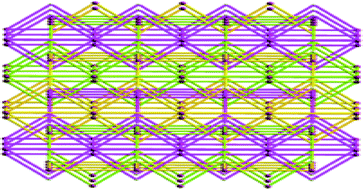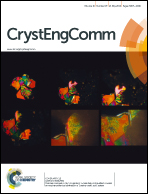Syntheses, characterization, and properties of five coordination compounds based on the ligand tetrakis(4-pyridyloxymethylene)methane†
Abstract
A nonplanar tetrahedral pyridine ligand has been synthesized and applied to assemble five metal–organic frameworks (MOFs) with novel structural features under solvothermal conditions, namely, {[Cu2(TPOM)(adi)2](H2O)4}n (1), {[Zn2(TPOM)(glu)2](H2O)8}n (2), {[Cd2(TPOM)(1,4-chdc)2(H2O)4](H2O)4}n (3), {[Ni(TPOM)(suc)(H2O)2](H2O)2}n (4), and {[Zn2(TPOM)(1,4-chdc)(NO3)2](H2O)2}n (5) (TPOM = tetrakis(4-pyridyloxymethylene)methane, adi = adipic acid, glu = glutaric acid, chdc = 1,4-cyclohexanedicarboxylic acid, suc = succinic acid). These compounds were characterized by elemental analyses, IR spectroscopy and X-ray single-crystal diffraction. Compounds 1 and 3 reveal 3-fold interpenetrating 3D frameworks with sqc969 and new topologies, while compound 2 possesses a 2-fold interpenetrating 3D framework with qtz topology. Compound 4 exhibits a non-interpenetrating 3D structure with the extension of the cage structure, in which there are only two pyridine nitrogen atoms in TPOM involved in the coordination. It is different from compounds 1–3, which may take distinct coordination modes under different conditions. In compound 5, the coordination mode of TPOM is also different from those of compounds 1–3; it is a 2D structure with a 2-fold interpenetrating framework.


 Please wait while we load your content...
Please wait while we load your content...